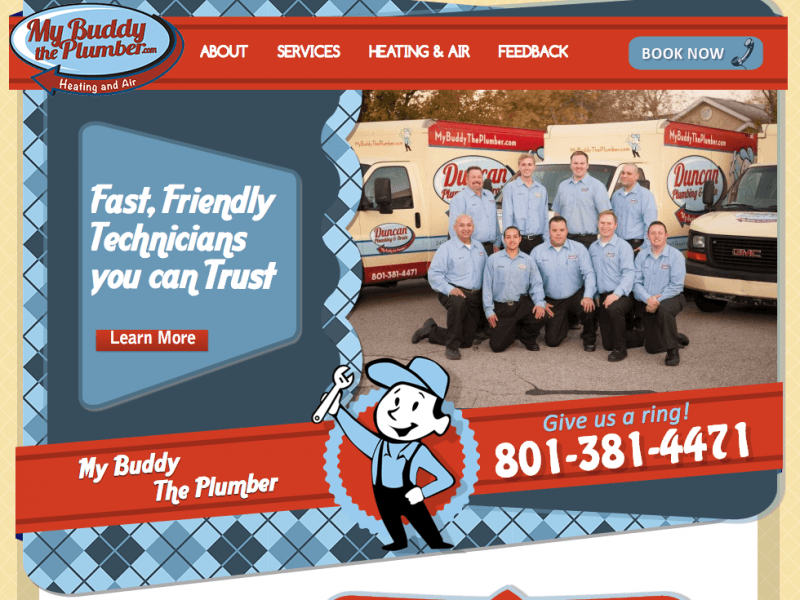Plumbing Repairs in an Emergency: What You Need to Know
What to do when you need emergency plumbing repairs Time is of the essence in the midst of a plumbing emergency. In the event of a plumbing emergency, such as a burst pipe or an overflowing toilet, it may cause havoc on your home and sanity if not handled quickly. A full look at all the essential tips you need to know to manage unexpected plumbing emergencies can be found in our blog. When you're facing a flooded basement or a malfunctioning water heater, knowing what to do can make all the difference. Whether you face a plumbing emergency or want to prevent it from happening in the first place, we have you covered with expert advice on how you can mitigate damage and restore order. Make sure you're prepared, educated, and ready to handle plumbing emergencies. Identifying Common Plumbing Emergencies There are many types of plumbing emergencies, but some occur more frequently than others. Freezing temperatures and excessive pressure are two of the most common reasons for pipes to burst. Overflowing toilets are also common, usually caused by pipe blockages. Moreover, water heater malfunctions can result in sudden leaks or hot water loss. The ability to recognize these emergencies quickly and take action in order to minimize damage or loss is essential for effective resolution. When homeowners recognize the signs of a problem, such as unusual sounds, damp spots, or sudden drops in water pressure, they can take immediate action to mitigate the situation and prevent further damage. Shutting Off Water Supply To prevent further flooding or damage, shut off the water supply in any plumbing emergency. Your main water shut-off valve should be located near the water meter or where the main water line enters the home. Water can be turned off by turning the valve clockwise. The emergency may involve a specific fixture, such as a toilet or sink, whose shut-off valves may be nearby. When faced with a crisis, knowing where these valves are can save valuable seconds. To address the issue effectively, assess the situation calmly once the water is off. Essential Tools for Quick Fixes Being prepared for a plumbing emergency can be the difference between life and death. Every homeowner should have these quick-fix tools at their disposal: Adjustable Wrench Pipe Wrench Plunger Plumber's Tape Pipe Cutter Flashlight Bucket Towels Gloves Drain Snake DIY Solutions for Immediate Relief A homeowner may need to implement temporary DIY solutions to alleviate the immediate problem until professional assistance arrives in an emergency plumbing situation. A leaking pipe can be temporarily patched with plumber's tape or a pipe clamp in order to stem the flow. In order to clear clogged drains and toilets, plunging or using a drain snake may be necessary. It is also possible to prevent further damage to floors or walls by strategically placing towels or buckets to contain water leaks. DIY measures can provide temporary relief, but to address the underlying issue, they should always be followed by professional repairs. When to Seek Assistance The DIY method is often helpful when dealing with minor plumbing issues, but professional assistance is usually required when dealing with more complicated problems. Recognizing when a plumbing emergency exceeds your ability to handle or your tools is crucial. There are several indicators that suggest you should call a professional, including extensive water damage, persistent leaks, foul odors, or a sudden drop in water pressure. Furthermore, if the problem is too complicated or a safety hazard, call a licensed plumber immediately. By contacting a professional promptly, you can prevent further damage to your home and ensure a proper resolution. Preventing Further Damage It is imperative to act quickly after a plumbing emergency to prevent further damage. The risk of secondary damage such as mold growth or structural weakening still exists, even after shutting off the water supply and implementing temporary DIY solutions. Additional temporary mitigation measures include drying affected areas thoroughly with fans or dehumidifiers, removing wet furniture or materials, and sealing off damaged sections of the plumbing system with waterproof materials. When homeowners address these concerns promptly, they reduce long-term damage and facilitate restoration. Step-by-step guide to dealing with burst pipes In order to prevent extensive water damage to your home, it is imperative to act swiftly when you have burst pipes. For an effective solution, follow these steps: The first step is to shut off the main water supply to your home to prevent water from flowing. Locate the water shut-off valve, which is usually found near the water meter or where the main water line enters the house. You can stop the flow of water by turning the valve clockwise. To relieve pressure in your home after shutting off the main water supply, open faucets to drain any remaining water from the pipes. In this way, further leaks can be prevented and water damage can be minimized. Locate the burst pipe: Make sure that the leak is located in your plumbing system. Inspect the ceiling and walls for visible signs of water damage, such as damp spots, bulging walls, or discolored ceilings. It is often found near these indicators that a pipe has burst. The size and severity of the rupture in the pipe should be determined to determine the extent of the damage. It may only be necessary to patch small leaks, whereas larger ruptures may require the replacement of the pipe. Using plumber's tape, pipe clamps, or rubber hose and clamps, you can temporarily patch the burst pipe if it is accessible and the damage is minor. A patch over the damaged area can be applied by wrapping the tape tightly around the leak or by using a clamp to secure it. My Buddy the Plumber +17208078051 https://mybuddytheplumberllc.com/ https://maps.app.goo.gl/ufTX6gKdvPuULvEB8 